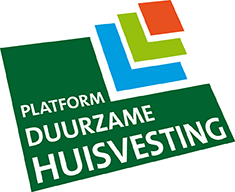Concepthuurcontract Green Lease
Eén van de grootste knelpunten in het verduurzamen van de utiliteitsbouw zijn utiliteitsgebouwen met een huurcontract. Hierbij is sprak van de split-incentive: huurder en verhuurder van een gebouw ervaren andere lasten en lusten van verduurzaming. Een Green Lease contract biedt daarvoor uitkomst. Hierin staan naast reguliere huurafspraken ook afspraken opgenomen hoe de lusten en de lasten van duurzaam gebruik te verdelen tussen verhuurder en huurder.
Klik hier voor de Green Lease Menukaart.
Waarom een Green Lease?
Een Green lease is een gewoon huurcontract waarin ook concrete afspraken vastgelegd worden tussen verhuurder en huurder over duurzaam beheer en gebruik van een gebouw. In een Green Lease contract wordt vastgelegd op welke manier verhuurder en huurder de duurzaamheid van een gebouw willen verbeteren en hoe zij verantwoordelijkheid nemen voor het duurzaam beheer en gebruik van een gebouw. Het is de plek waar duurzaamheid ambities van verhuurder en huurder vastgelegd worden in afspraken, net zoals alle andere afspraken die in een huurcontract staan. De afspraken kunnen gaan over energie en water, maar ook over binnenklimaat en afval. Of over het stimuleren van het gebruik van de fiets of het openbaar vervoer. Over alles wat met duurzaamheid te maken heeft.
Wat is de Green Lease menukaart?
De Menukaart Green Lease is een online tool om eigenaren en huurders te stimuleren om duurzaamheidsdoelen in het huurcontract vast te leggen. Het resultaat van de Green Lease Menukaart is een concepthuurcontract dat als basis kan dienen voor het huurcontract. De Menukaart kan ook worden gebruikt als discussiestuk tussen huurder en verhuurder, alvorens zij het huurcontract opstellen en ondertekenen.
De Green Lease Menukaart maakt onderscheid in verschillende kleuren groen. Een donkergroene kleur wordt gebruikt voor afspraken/bepalingen in het huurcontract met het hoogste duurzaamheid ambitieniveau, bijvoorbeeld afspraken om een gebouw volledig klimaatneutraal te maken. Logisch dat lichtere kleuren groen dan worden gebruikt voor minder ambitieuze afspraken/bepalingen. De ambitie is om wat nu ‘donkergroen’ is uit te laten groeien tot de standaard van de toekomst.
De Green Lease Menukaart bevat de volgende onderdelen:
- Een overzicht van alle hoofdthema’s van de Menukaart Green Lease, met een korte toelichting. De hoofdthema’s structureren het proces om te komen tot een Concepthuurcontract Green Lease;
- (Gezamenlijke) doelstellingen en vastgelegde procesafspraken;
- Methode voor financiële verrekening die is overeengekomen;
- Afspraken over inrichting, gebruik, exploitatie en monitoring, deze worden vanuit de basismethodiek voor financiële verrekening verder gedetailleerd.
Per hoofdthema wordt daarna weergegeven welke gedetailleerde onderwerpen en afspraken er opgenomen kunnen worden in de Green Lease. Een aantal van deze afspraken is gerangschikt op duurzaamheidsniveau. Hierbij is per keuze aangegeven hoe ‘groen’ de afspraak is. Afhankelijk van het ambitieniveau van beide partijen kan er voor een ‘groenere’ afspraak worden gekozen.
Wat zijn de voordelen van de Green Lease Menukaart?
- Gratis te downloaden
- Zelf bepalen met welke onderdelen uit de menukaart te starten
- Partijen kunnen zelf onderdelen toevoegen aan de menukaart
- Een opzet om het gesprek over duurzaamheidsambities aan te gaan met de (ver)huurder
Contact
Heb je vragen over (het gebruiken van de) Green Lease menukaart? Neem contact op met bureau@platformduurzamehuisvesting.nl
De Green Lease Menukaart is ontwikkeld door Platform Duurzame Huisvesting in samenwerking met Vastgoedmanagement Nederland en Jones Lang Lasalle.
Bekijk hier de Green Lease Menukaart.
